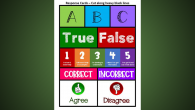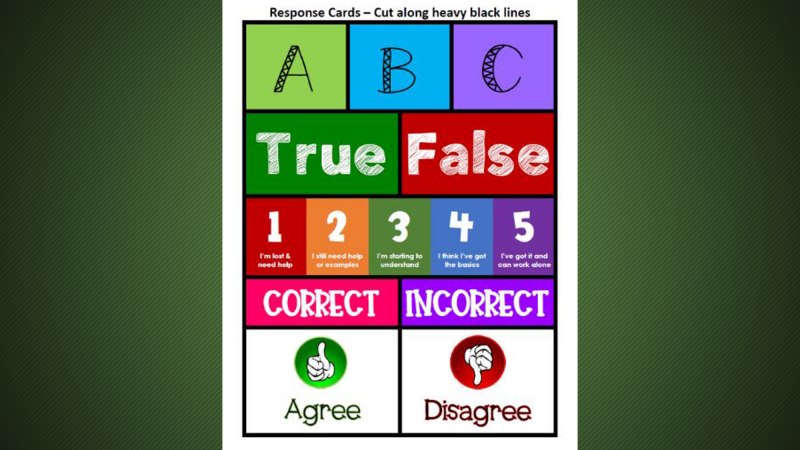 This guest blog post is authored by Melissa Cheesman Smith, who is a 5th grade teacher in Mesa, Arizona. She has co-authored numerous teaching books with Timothy V. Rasinski, including The Megabook of Fluency and Daily Word Ladders: Idioms, which will be released later this month. She has been assigned to teach remotely this school year.
This guest blog post is authored by Melissa Cheesman Smith, who is a 5th grade teacher in Mesa, Arizona. She has co-authored numerous teaching books with Timothy V. Rasinski, including The Megabook of Fluency and Daily Word Ladders: Idioms, which will be released later this month. She has been assigned to teach remotely this school year.
While parents, students, and teachers are well aware of the challenges around remote learning, good things have come from this experience. As teachers, we have learned a lot! We’ve been pushed to rethink how we teach, how we engage students, and how we can implement best practices. Here are a few simple strategies I am using in my remote classroom that I have found to be effective and engaging and I hope will also help you!
1. Response Cards: Finding individual ways for students to interact is essential! With a small amount of preparation, I made five sets of multi-purpose response cards that fit on one piece of paper and then printed the page in color for each student. I included the response cards in one of the materials packets students receive every three weeks when we start reading a new book. Students cut apart the cards and then have them ready by their screens. After I ask the class a question, the response cards can be held up to the screen as a way for each student to respond individually. The one I use most often is a folded card numbered 1–5. At the end of a math lesson, my students hold it up to show me how well they know the concept we covered. Kids who say they are at 4 or 5 sign off and work on their digital math assignment, while kids who select 1, 2, or 3 stay on so we can practice more problems together until they are comfortable. This authentically creates a small group for the math lesson based on student needs.
2. Screen-Free Literature Study: With distance learning, students need a break from eyes-on-screen, so during our literature study, I read aloud, and they read along with a copy of the book. Before we begin, they have one minute to get settled into a comfy place with a snack or drink. The only rule is that I need to be able to see them reading along in their onscreen window. Periodically, I will have them scoot over to their computer and respond to a question I pose in the chat box. For example, when we read Wringer by Jerry Spinelli, I will ask: “In one, word, what feeling do you think Palmer is experiencing right now?” Notice that I request a quick response so we can move back into the reading quickly.
3. Fluency Poems:It is difficult to listen to students read one-on-one each week in a remote setting. To combat this challenge, I have copied sets of poems that students pick up in their materials packets every few weeks. You can also provide students access to poems virtually if that works better for you. Students have a choice between two fun, kid-friendly poems, and they practice reading their poem of choice all week. Students know they need to practice a dozen times before recording and sending it into me on Friday. This gives me a chance to hear my students read, and gives my students a chance to work individually on fluency (smoothness, accuracy, expression). We do not focus on rate—this is an opportunity to do well in reading, not just read quickly. This one activity promotes not only fluency, but also speaking skills and vocabulary! For more fluency ideas, check out The Megabook of Fluency.
4. Brain Breaks: During a transition in any virtual lesson, have students do a quick brain break to move their bodies. Engage students by providing a list of movements, and then calling on a new student each time to decide how many the class will do. Here are some ideas for movements from the book, Classroom Fitness Breaks to Help Kids Focus by Sarah Longhi:
- frog hops
- jabs
- windmills
- toe touches
- arm stretches
- overhead claps
- thunder feet
5. To-Do Lists: Every morning, we do two live, hour-long sessions. Then, students have independent, or asynchronous work to do the rest of the day. Before we finish our final whole group session of the day, students have a numbered notepad that we use to make to-do lists for the remaining time to help them stay focused. This practice also helps build great organizational habits! Many of my students use this tool with their families as a way to show that they have completed everything needed for the day.
6. Connection-Building: Take advantage of the fact that kids are at home! The first 15 minutes of the day in my classroom are informal. My kids screen share digital or hand-drawn art they have created, show us their pets at home, toys they have built, etc. I take mental notes during this time and it allows me to connect with them by giving me something to ask them about during one-on-one meetings throughout the week. It’s also a wonderful way for students to have “kid-talk” with each other and build meaningful connections that are so important during this challenging time.



